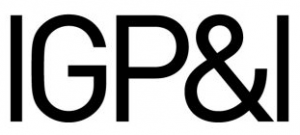The recent news of the possible liquefaction on board a listing ship abandoned by her crew and loaded with nickel ore from Surigao is a timely reminder of the dangers of shipping this type of cargo.

Surigao, Philippines – increasing concerns about possible liquefaction of nickel ore cargoes
Published 20 July 2015
There are increasing concerns about the safety of nickel ore being shipped from the Surigao area, especially Dinagat. Nickel ore is now listed in the IMSBC Code as a Group A cargo that may liquefy, requiring the shipper to provide declarations and certificates evidencing that the cargo is safe to carry with a moisture content below the Transportable Moisture Limit (TML). Unfortunately, there have been numerous occasions where documentation from shippers, located in the Philippines and previously Indonesia (before an export ban), has been found to be inaccurate. In some cases, the consequences have been fatal, with loss of life and vessel.
Cargo samples can look relatively dry at the time of loading and since nickel ore has a high clay content they may pass the can test. The IMSBC Code now makes clear that “if samples remain dry following a can test, the moisture content of the material may still exceed the TML”. Although not recognized by the Code, a crude indicator of excessive moisture content is cargo splattering if dropped from a height. It is this agitation of nickel ore, which may occur on the voyage from the motions of the vessel and/or vibrations from the ship’s engines, that may lead to it becoming elastic and having a fluid state. Further information can be found here.
We take this opportunity to remind Members and clients to follow precautions previously set out in our loss prevention materials relating to liquefaction. In particular:
The accuracy of the shipper’s certificates should not be relied upon.
A vessel should not be loaded solely on the basis of can testing of the cargo*.*
An experienced surveyor should assist the master in rejecting cargo that may not be safe for carriage and in arranging for sample analysis at an independent laboratory, as appropriate.
Agitation of the cargo during loading should be avoided. It should be placed into the hold - not dropped from a significant height.
For a reminder of Gard’s position on cover see our Insight on Cargo liquefaction. Put simply, Members and clients are at greater risk of prejudicing cover if unsafe cargo is loaded without any checks or if unsafe cargo is loaded from a country where there is a history of unreliable shippers' certificates solely on the basis of can tests and without independent sampling and analysis.
Further information can also be found on the Liquefaction section our website.


